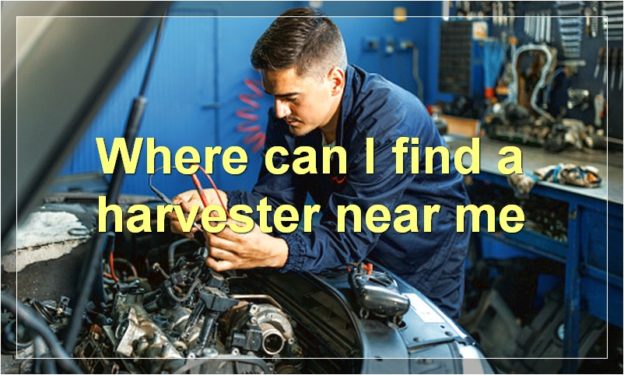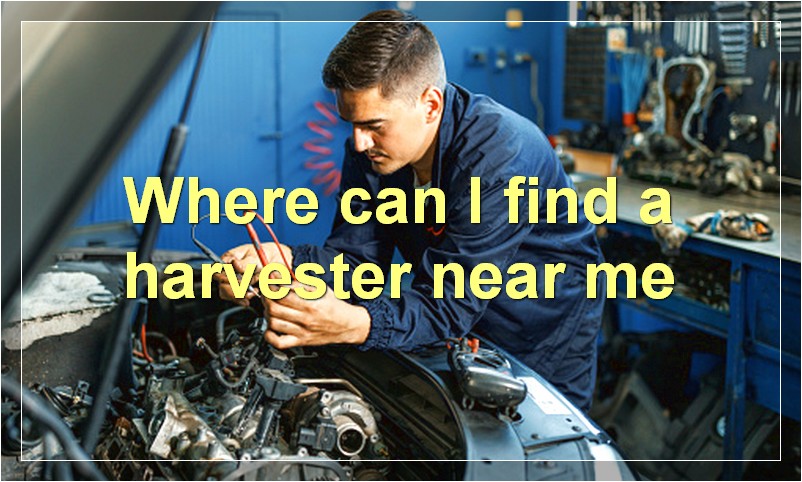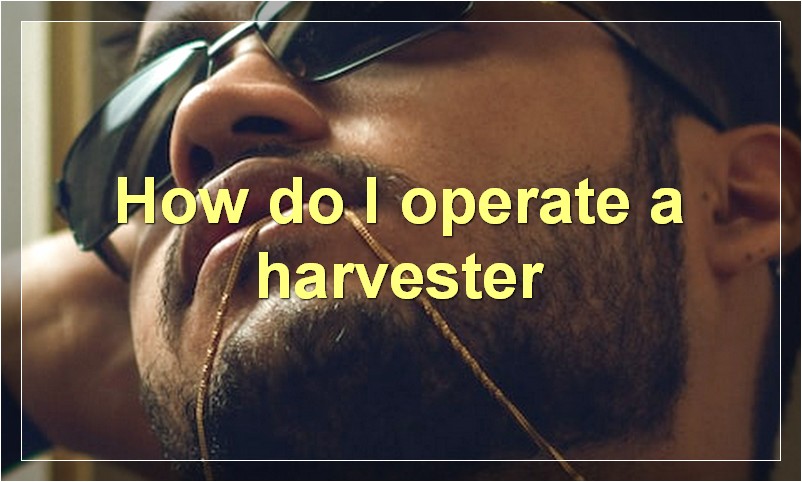If you’re looking for a comprehensive guide to harvesters, look no further. In this article, we’ll cover everything you need to know about these machines, from how they work to the different types available. By the end, you’ll be an expert on all things harvester-related.
Where can I find a harvester near me
If you’re looking for a harvester, there are a few places you can look. You can check with your local farmers’ market, or you can search online. There are a few websites that allow you to search for harvesters in your area. You can also check with your local Cooperative Extension office.
How do I choose the right harvester for my needs
There are many factors to consider when choosing the right harvester for your needs. The type of crop you will be harvesting, the size of your farm, and your budget are all important factors to consider.
The first step is to determine the type of crop you will be harvesting. There are different types of harvesters designed for different crops. For example, if you are growing wheat, you will need a combine harvester. If you are growing corn, you will need a corn picker.
Next, you need to consider the size of your farm. If you have a large farm, you will need a larger harvester. If you have a small farm, you can get away with a smaller harvester.
Finally, you need to consider your budget. Harvesters can be expensive, so you need to make sure you can afford the one you need. There are many used harvesters available, so you may be able to find a good deal on a used one.
What are the different types of harvesters available
Different types of harvesters include:
• Combines – used to harvest grain crops such as wheat, barley, oats, and rye
• Cotton pickers – used to harvest cotton
• Potato diggers – used to harvest potatoes
• Sugar beet harvesters – used to harvest sugar beets
How much does a harvester cost
A harvester is a machine used for harvesting crops. The cost of a harvester depends on the type of machine and the size of the farm. For example, a small farm might only need a tractor with a simple attachment, while a large farm might need a combine harvester, which is a more complex and expensive machine. The cost of a harvester also depends on whether it is new or used. Used machines may be less expensive, but they may not last as long or be as reliable as new machines.
How do I operate a harvester
Assuming you would like a blog titled “How to operate a harvester”:
Harvesting is a crucial part of farming – it’s when you gather your crops and bring them in from the field. If you want to be a successful farmer, it’s important to know how to operate a harvester. Here are some tips on how to do just that:
1. Familiarize yourself with the machine. Before you can start operating a harvester, it’s important that you familiarize yourself with the machine. Take some time to read the manual and get to know all the different parts of the machine. This will make it easier for you to operate it later on.
2. Start with the basics. Once you’ve familiarized yourself with the machine, it’s time to start learning how to actually operate it. Start by learning how to turn it on and off, and how to move it forwards and backwards. These are the basic movements that you’ll need to know in order to operate the harvester.
3. Practice makes perfect. The more you practice operating the harvester, the better you’ll become at it. Don’t be afraid to make mistakes – everyone does when they’re learning something new. Just keep practicing and eventually you’ll get the hang of it.
What are the safety precautions I need to take when using a harvester
When operating a harvester, there are several safety precautions that should be taken in order to avoid injury. First, always read the operator’s manual before using the machine. This will ensure that you are familiar with the controls and understand how to safely use the harvester. Second, always wear proper safety gear when using the machine, including gloves, goggles, and ear protection. Third, never operate the machine without someone else present. This will help to ensure that someone is available to assist if something goes wrong. Finally, always follow all safety instructions provided by the manufacturer. By taking these precautions, you can help to ensure that you have a safe and enjoyable experience when using a harvester.
What are some common problems with harvesters
One common problem with harvesters is that they can break down often. This is especially true for older models. another problem is that they can be difficult to operate, and even experienced farmers can have trouble with them. Finally, they can be very expensive to maintain and repair.
How do I troubleshoot a problem with my harvester
If your harvester is giving you trouble, there are a few things you can do to troubleshoot the problem. First, check the manual that came with your harvester. This will give you specific instructions on how to maintain and troubleshoot your particular model. If you can’t find the manual, or if it’s not helpful, you can try searching online for forums or chat rooms where other harvester owners can offer advice. You can also contact the manufacturer directly and ask for help. Finally, if all else fails, you can always take your harvester to a qualified repairperson to have them take a look at it.
Where can I get my harvester serviced or repaired
If your harvester is in need of service or repairs, there are a few different places you can go. Depending on the severity of the problem, you might be able to take care of it yourself with a little troubleshooting. However, if the issue is more serious, you’ll need to take it to a professional. There are agricultural service companies that specialize in servicing and repairing harvesters. You can also take it to the dealership where you purchased it. They should be able to help you out or at least point you in the right direction.



